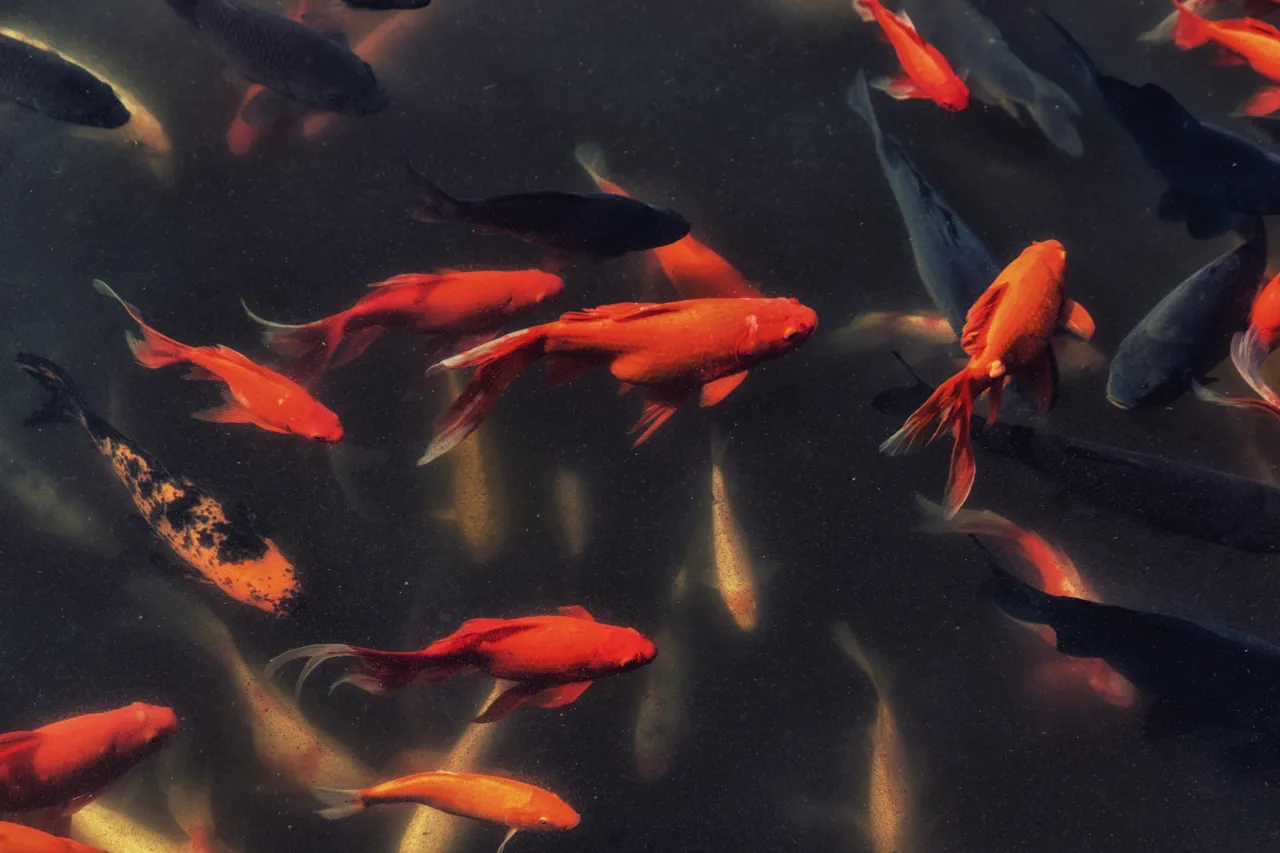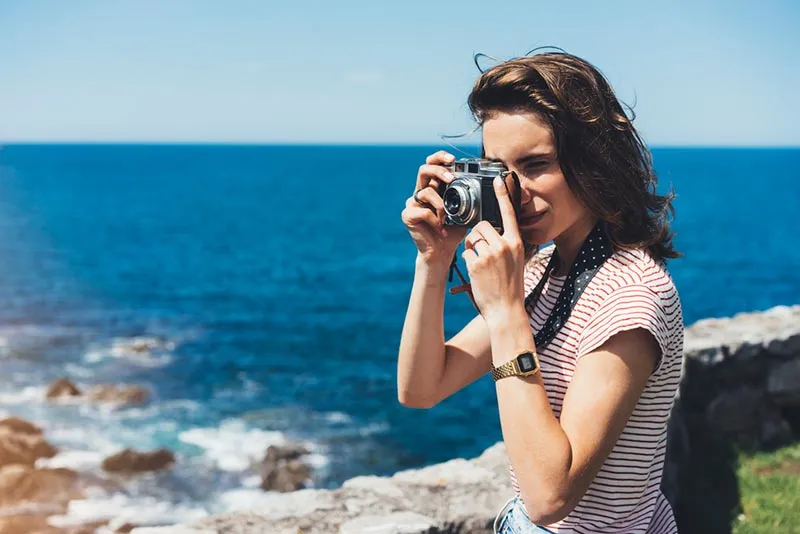Black and White Photography: A Guide for Beginners
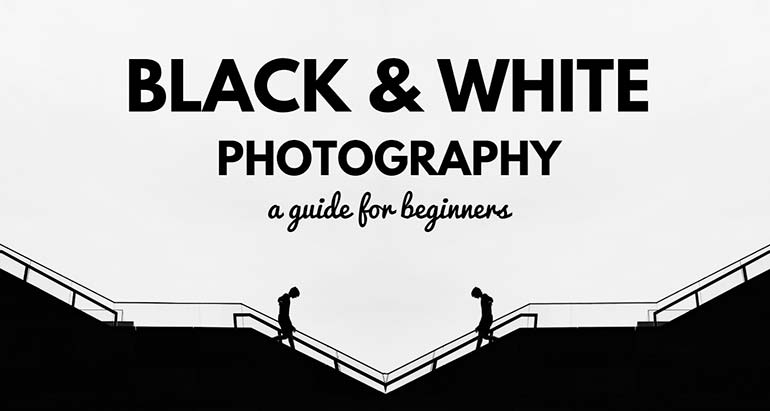
Black and white photography is an artistic expression of the world around us with roots that go back to very beginnings of photography. Long gone are the days when these types of images were the only option available to artists. Today, black and white photo artistry remains relevant and some photographers still consider it the purest form of photography.
There is simplicity, beauty and emotion in an image that is drained of color to reveal the object or subject at hand. Simply put, black and white photography acts as a filter for distracting elements and instead focuses photographs on what is essential. If you’d like to expand your expertise or try your hand at shooting in black and white, you have to adjust yourself to looking at the world a little differently. Here are some of the most useful tips that will help you get started.
Seeing the world in black and white
The key to black and white photography is to adjust your vision and become capable of distinguishing what looks good in color and what is best depicted in black and white.This means being able to identify why you are choosing to shoot in black and white and understanding why it’s better to be shot this way. The rest is all up to you and your compositions.
As you improve in this aspect, you can begin to play with your images by adjusting brightness, contrast, noise and other aspects that can elevate your black and white images. Although this may sound like straight forward advice, it takes time to master the primary skill of viewing the world in monochrome.
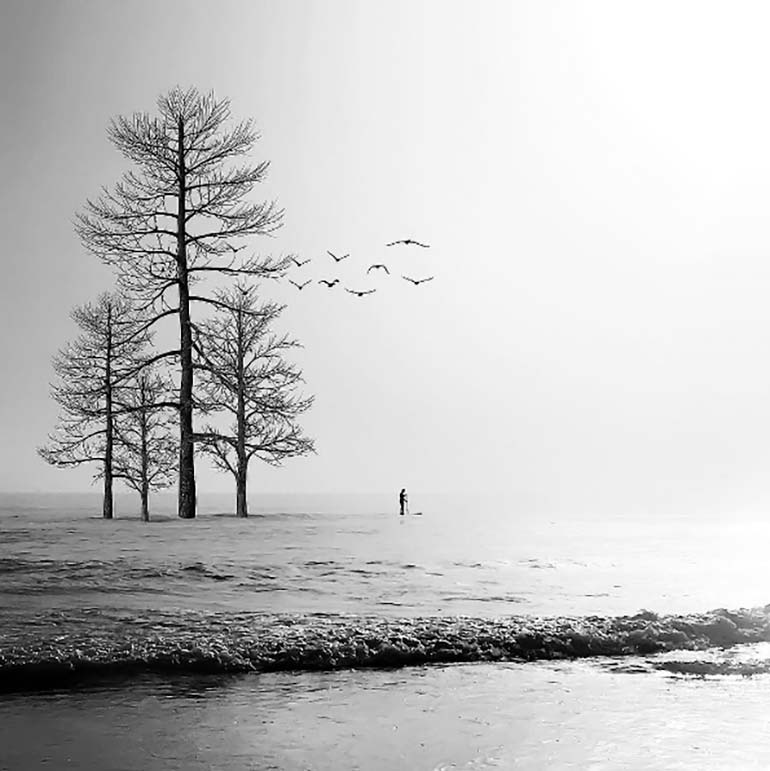
Pay attention to light and shadow
The way light illuminates objects adds interest to black and white photographs. With proper lighting, even the simplest of photographs become visually interesting. As in the example below, a plain architectural structure becomes a beautiful geometrical pattern.
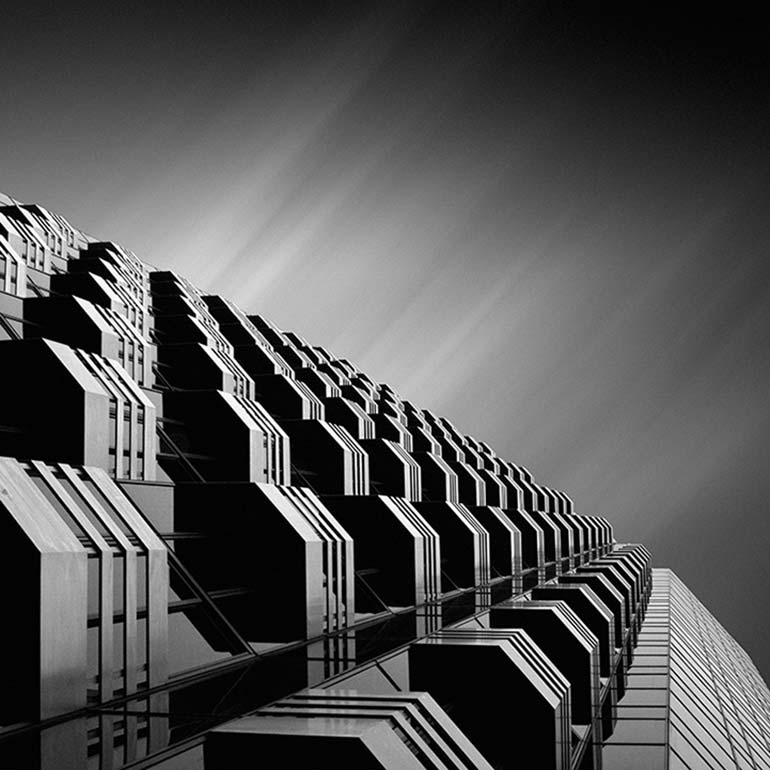
Altering brightness and contrast
While there are a million things you can tweak with color photography, when it comes to black and white photography, the main focus is the brightness and contrast of the images. This is what will give interest to your final shots; the higher the contrast, the stronger the image. For more dramatic shots, try to have some part of the photo have a pure white color and some part close to pure black.
If you are puzzled as to where to start, be on the lookout for objects, people, or landscapes that are lit in a way that provides sharp contrast and gradation in real life. Learning to see in black and white also means seeing contrast above all else.
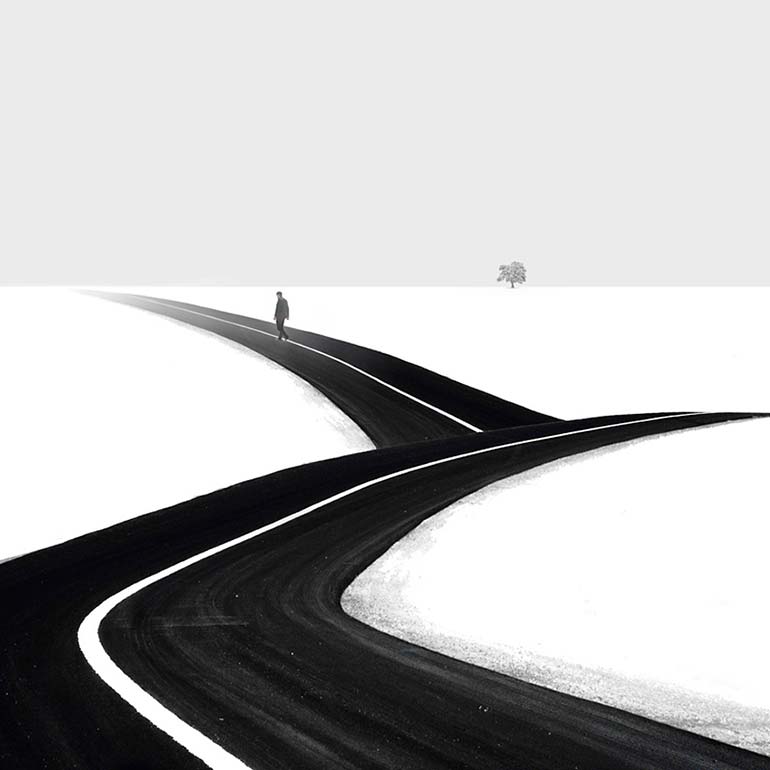
On the lookout for textures
Always be on the lookout for interesting textures. When a surface is not front-lit, the camera picks up on the finest details which makes photographs interesting and compelling. Combining a variety of textures is also a good way to add appeal to your final shots.
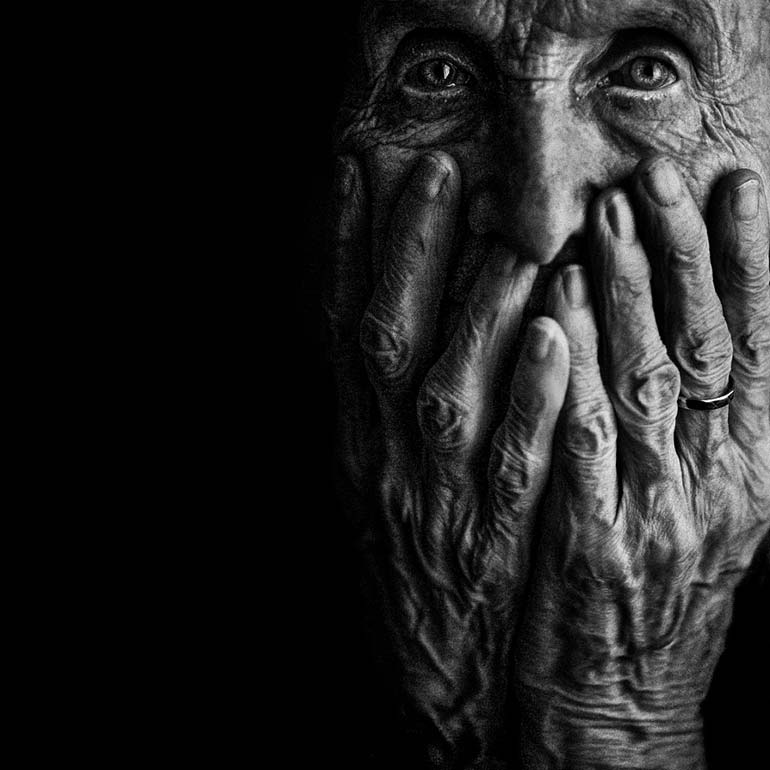
Filtering shapes and forms
Once you grasp a few basics, you can go on to enhance your photographs by choosing interesting shapes and forms. If you envision a world that is truly drained of color, even the simplest things in everyday life become beautiful by shapes and forms alone. Be on the lookout for elements that will shed light on some really simple shapes as well as the more complex ones.
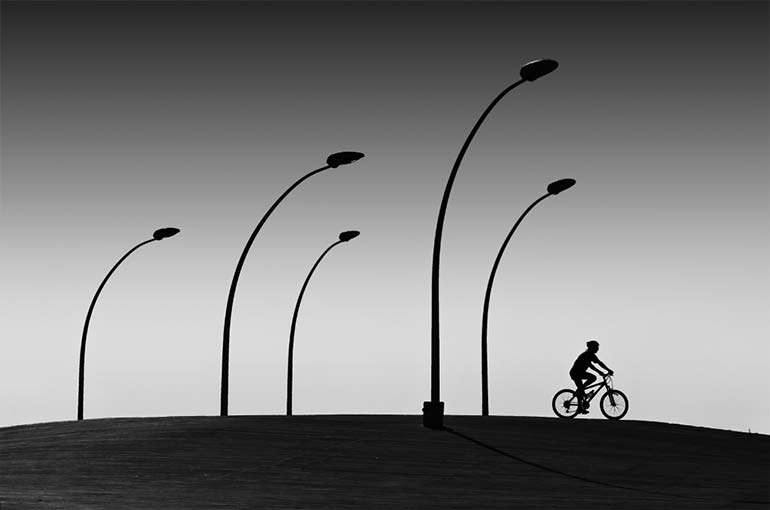
A fresh approach to lighting
One of the most powerful resources you have at your disposal with black and white photography is natural lighting and the play on light and shadow. The way natural light falls on objects can illuminate the most beautiful shapes and textures that you can’t see with the naked eye. Take advantage of early mornings and sunsets because everyday is an opportunity to capture a moment or a fragment of time that will not be the same tomorrow.

Optimal shooting mode
To get started shooting in a black and white, you can choose the monochrome mode which is available on most DSLRs. Remember that if you are shooting in a black and white mode, you won’t be able to do much editing to the original files. If you’d like to have more options when editing your images, shoot in both in JPEG and RAW. You can save both versions of the image so that you can have more options for later stages of the creative process.
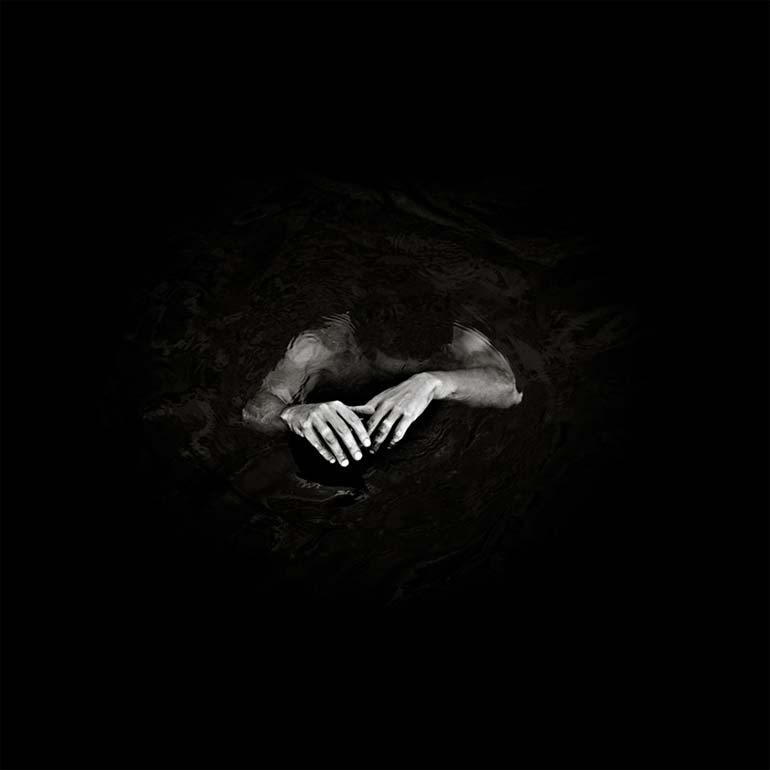
Experimenting with long exposure
Long exposure will give you a great variation of grey tones and add immediate interest to your photographs. This technique should be used for capturing things like moving clouds and water. Long exposure will result in a blur of movement which will enhance the tonal contrast. Playing around with exposure and shutter speed will give you a great range of experimental shots.

Lastly, it is worth mentioning that if it is true that color photographs depict reality as it is, a black and white image gives us an opportunity to interpret reality in an artistic form even if you’re dealing with a boring location. The best thing you can do is to go out and experiment with these tips in mind. It is only through practice, trial and error that you will discover the hidden talent in you.




